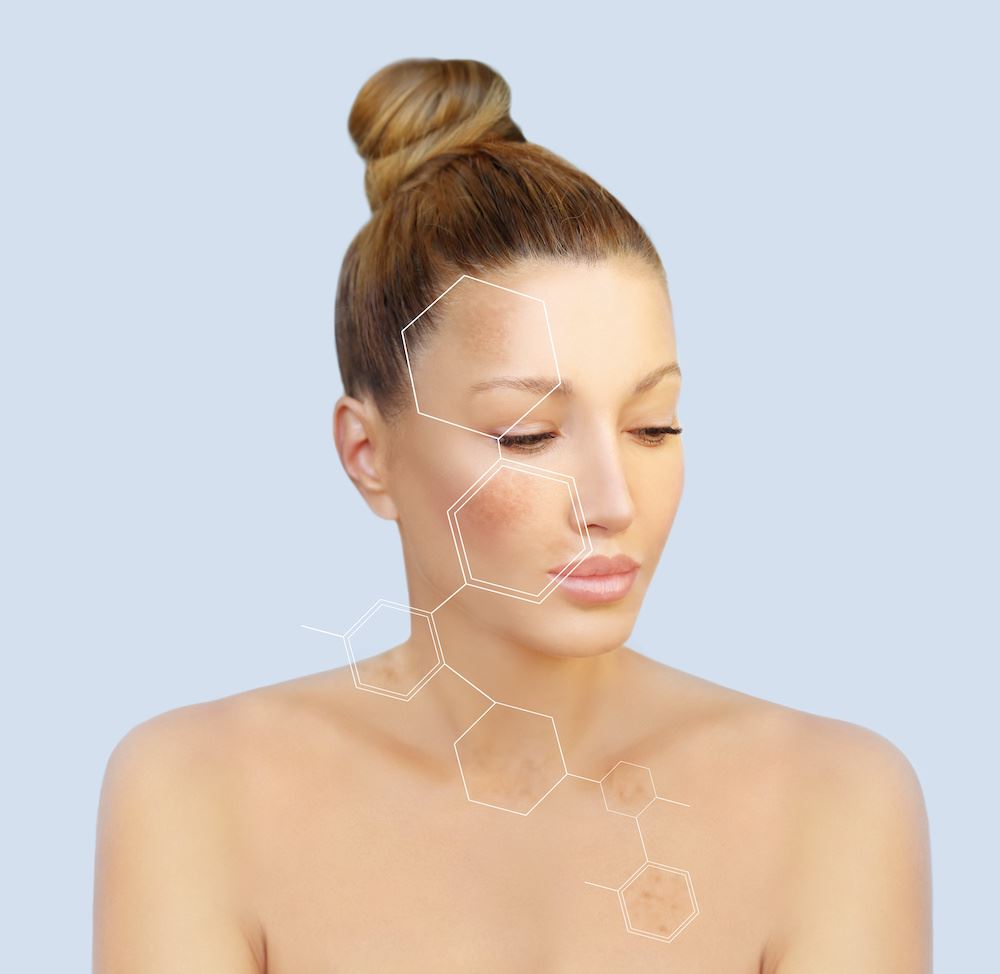
If you have spots on your skin that are darker than the rest, you might have a skin condition called hyperpigmentation. The condition is usually harmless from a health perspective and shouldn’t irritate your skin. However, depending on the severity and location of it, you might want to get it removed since it can be unsightly to look at. Hyperpigmentation occurs due to an overproduction of melanin and can happen for many different reasons. There are three different types of hyperpigmentation to be aware of, but the treatment option is the same for all. We’ve explained more to you here.
Melasma
According to AARP, melasma affects roughly five million people, and most of them are women. The skin condition is commonly associated with the use of oral contraceptives, sun exposure, and pregnancy, but the definitive cause of melasma is not yet known. Most women develop melasma in the facial area, including the chin, forehead, cheeks, upper lip, and nose. When a person’s melasma is triggered by something specific, like being pregnant or taking birth control pills, it could go away on its own after several weeks or months. Many women will wait and see what happens after their pregnancy ends before seeking treatment options. Some forms of melasma can stay for several years and even as long as the rest of a person’s life.
Sunspots
Sunspots are also called age spots and can develop on a person’s hands, chest, face, neck, and other areas. Like melasma, these spots are virtually harmless and won’t irritate your skin at all. Most people will begin noticing sunspots when they approach age 40, but it could be earlier or later as well. The number of sunspots, the location, and how defined they are depend on how much sun exposure you’ve had throughout your life. Some of the best ways to prevent sunspots include avoiding being in direct sunlight as much as possible, using sunscreen any time you’ll be outdoors, covering your skin, and avoiding the use of tanning beds. The good news is sunspots can be treated and removed from your skin if they become too unsightly, but it’s still good for your overall skin health to practice protecting it from the sun as much as possible.
Post Inflammatory Hyperpigmentation
Post inflammatory hyperpigmentation occurs when the skin suffers inflammation or an injury and the affected area is darkened once the skin heals. Skin trauma can range in severity and can be caused by basic things like waxing, acne breakouts, infections, and more. This skin condition usually fades on its own over time and can take several months or longer depending on the severity. Sun exposure does not cause post inflammatory hyperpigmentation, but being out in the sun when you have the condition can aggravate it and make the affected skin look even darker. It’s important to cover the area as much as possible when exposed to sunlight so it will have a greater chance of fading on its own.
Best Treatment Options For Hyperpigmentation
The common types of hyperpigmentation are treatable, and laser skin resurfacing is widely regarded as the best option available today. There are plenty of topical creams you can try, but most of them won’t make much of a difference. Many people allow hyperpigmentation to fade on its own over time unless they can’t stand looking at it on their skin. At that point, laser skin resurfacing becomes the preferred option for removing it.
The process of laser skin resurfacing involves a trained medical professional sending a laser beam through the layers of your skin, which creates tiny polka dot prints and columns. The skin immediately begins working to repair those columns and the result is pushing out the discolored and old skin and replacing it with fresh skin. The laser is targeted so only the affected area will be touched. And what’s most beneficial about laser skin resurfacing is the process boosts elastin and collagen production for several months after the treatment, so your skin will continuously improve for up to six months later. According to Mayo Clinic, side effects can include itching, swelling, redness, skin color changes, infection, acne, and scarring. Most of the time these side effects are minimal and preventable by using proper post-care techniques provided by your medical professional.
Schedule A Consultation To Treat Your Hyperpigmentation
While laser skin resurfacing is safe on virtually any skin type, it’s always best to check with your medical professional to determine whether it’s right for you. Hyperpigmentation can be aggravating to look at and it’s worth pursuing if you constantly try to cover it up so it won’t be visible to anyone else. A laser skin resurfacing treatment can take roughly 30 minutes depending on the area being treated and how widespread it is. However, clients usually feel minimal discomfort throughout the treatment and it’s made easier by the topical anesthetic applied before the treatment begins.
Skin Deep Laser Services uses top-of-the-line equipment and highly-trained medical professionals to perform laser skin resurfacing treatments. When you’re dealing with your skin, you can never be too careful. Using the wrong products or having an inexperienced medical professional perform treatments can leave your skin with lasting damage that’s not worth it. When you work with us, you’ll be on your way to having clear skin free from hyperpigmentation again. It all starts with a free consultation, so contact us today to schedule yours.


